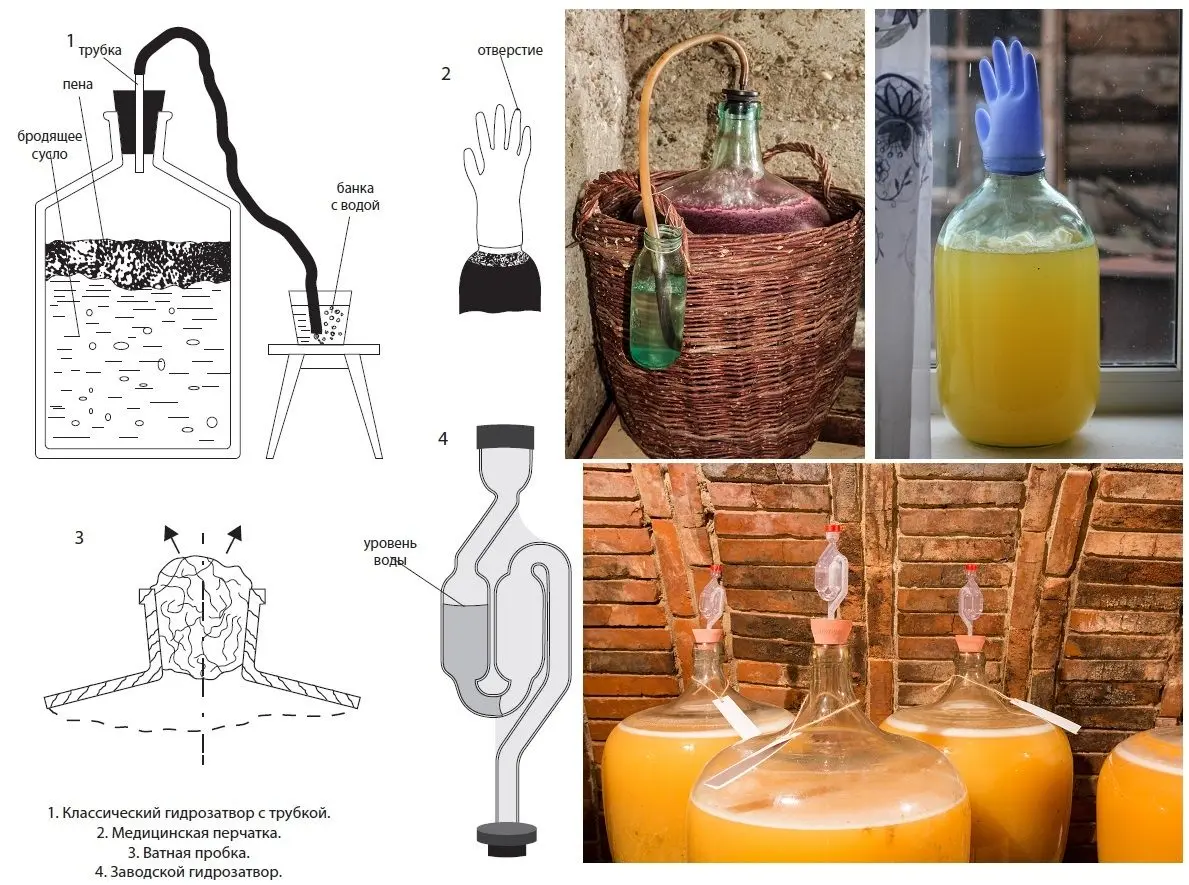Blueberries make excellent homemade wines, in many ways reminiscent of grapes. But blueberries ferment badly, even the slightest mistake in cooking can ruin everything. Therefore, I advise you to strictly follow the technology and take care of sterility. Pathogenic microorganisms should not get into the wort.
For winemaking, only fresh ripe berries are suitable, which were plucked for no longer than 24 hours. It is desirable that the fruits are juicy. First, the berries need to be sorted out, removing too small, rotten, moldy and overripe. Then wash the blueberries and let the water drain.
I don’t usually recommend washing the berries to leave wild yeast on the skins, but in the case of blueberries, this must be done, otherwise the wine will have an unpleasant aftertaste. We will replace the washed-out wild yeast with a simple home-made sourdough for wine, raisins (if you are sure of its quality) or store-bought wine yeast. The last option is the best, but at home, sourdough is most often used, which is prepared 3-5 days before the wort is bookmarked.
Before starting, all used containers must be thoroughly washed (preferably with boiling water) and wiped dry. There should be no foreign odors. It is allowed to work with the wort only with clean hands, so as not to infect it with third-party fungi and bacteria.
Ingredients:
- blueberries – 4 kg;
- water – 2 liters;
- sugar – 1 kg;
- raisins – 100 grams (or wine yeast).
blueberry wine recipe
1. Mash the washed berries until smooth, place in a container with a wide neck.
2. Add raisins (sourdough or wine yeast) and 300 grams of sugar, mix well. Tie the neck with gauze or cover with a cloth, then transfer the container to a dark place with a temperature of 18-25 ° C. Once a day, mix the berry mass with a clean hand or a wooden stick, knocking off the “cap” on the surface of the pulp and peel.
3. After 3-4 days, when signs of fermentation appear (foam, hiss, sour smell), squeeze the must through gauze. Pour the liquid part into a fermentation tank (fill up to a maximum of 75% of the volume), pour the pulp with plain water at room temperature, leave for 15-20 minutes, then squeeze again through cheesecloth. Mix the resulting liquid with fermented juice. The pomace can be thrown away, they are no longer needed.
4. Add 300 grams of sugar to the must, install a water seal (medical glove with a small hole in one of the fingers) on the container and transfer to a dark place with a temperature of 18-25 ° C.

5. After 5 days, add the last portion of sugar (300 grams). To do this, drain 0,5 liters of fermenting juice, dilute sugar in it, pour the resulting syrup back, and then install a water seal.
6. After 25-50 days, fermentation will end: the water seal will stop bubbling, blueberry wine will brighten, and sediment will appear at the bottom. It’s time to drain the wine from the sediment through a thin tube into another clean container, without touching the sediment at the bottom.
If fermentation does not stop after 50 days from the date of installation of the water seal, so that bitterness does not appear, the wine must be drained from the sediment, then allowed to ferment at the same temperature.
Taste the fermented drink. If desired, add more sugar for sweetness or fix with alcohol (vodka) 2-15% of the volume. Fortified wine is better stored, but not as aromatic and tougher in taste.
Fill storage containers to the top (preferably so that the wine does not come into contact with oxygen) and close tightly. If sugar was added, it is better to keep the first 7-10 days under a water lock in case of repeated fermentation.
7. Transfer the drink to a dark, cool (5-16°C) place, leave for at least 2-3 months to age, then store at this temperature.
Once every 20-25 days, when a 2-5 cm layer of sediment appears, filter the wine by pouring it through a tube into another container, leaving the sediment at the bottom of the old one. Blueberry wine is ready when the sediment no longer falls.
8. The drink can be poured into bottles or left in the same container. Shelf life – up to 3 years. Fortress – 10-12%. Prescription yield – 3-4 liters.










